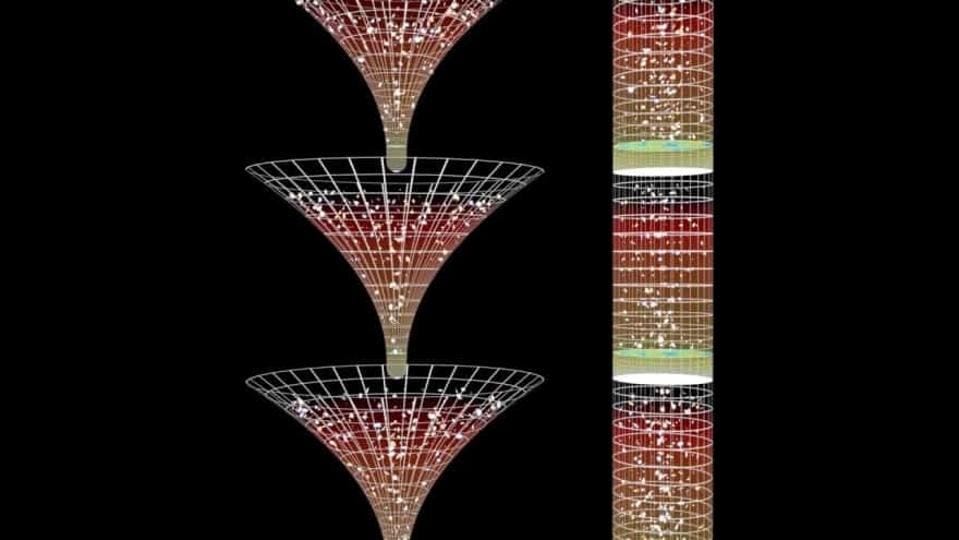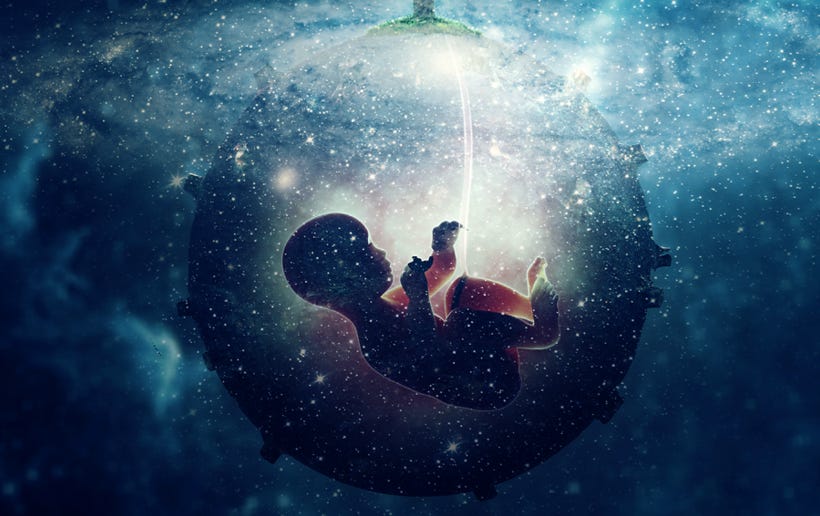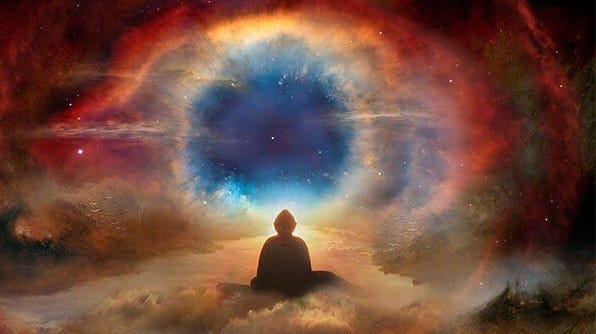Cyclic Cosmological Model echoes an ancient spiritual belief
When the universe and the soul mirror each other
“As is the macrocosm, so is the microcosm.”
- An ancient belief
Greetings, Fellow Bohron
Sometimes physics and life connect so elegantly that you can’t help but appreciate the beauty of nature. I just found out one such connection and thought it ought to be shared with you. This is literally God humming the melody of the cosmos, creating a timeless bond between the universe and us.
So let’s dive right into it.
The Cyclic Universe: Death and Rebirth

Supported by theoretical physicists Paul Steinhardt and Neil Turok, the Cyclic Cosmological Model suggests that our universe is part of an endless sequence of birth, death and rebirth. Each cycle begins with a Big Bang, expands, cools, and eventually contracts in a "Big Crunch," only to be born again. In this way, the universe undergoes infinite cycles of Big Bangs and Big Crunches. Matter and energy are recycled, never truly destroyed, only reshaped.
Unlike the traditional Big Bang theory, which implies a singular beginning, the cyclic model proposes that the cosmos has no true start or end—only an eternal recurrence. This eternal recurrence might imply some law, a symmetry, or perhaps even a memory embedded in the universe’s structure.
Could this “something” be analogous to what many spiritual traditions call the soul?
Sacred Texts and the Eternal Self
Cyclic Model mirrors a timeless truth echoed across ancient spiritual traditions — that the Self, or the soul, is also part of an eternal cycle. It cannot be created, destroyed, or diminished. It merely changes form, migrates, and evolves.
Nearly all major spiritual traditions speak of the soul’s immortality.
In the Bhagavad Gita, Lord Krishna tells Arjuna:
"na jāyate mriyate vā kadācin
nāyaṁ bhūtvā bhavitā vā na bhūyaḥ
ajo nityaḥ śāśvato 'yaṁ purāṇo
na hanyate hanyamāne śarīre"
(Gita 2.20)
"The soul is never born, nor does it ever die; nor having once been, does it ever cease to be. Unborn, eternal, changeless, and ancient, the soul is not killed when the body is slain."
Here, Krishna assures Arjuna that the true self is beyond physical destruction, just as the cyclic universe persists beyond any single cosmic phase.
The Quran acknowledges the soul’s journey through different states:
كَيْفَ تَكْفُرُونَ بِٱللَّهِ وَكُنتُمْ أَمْوَٰتًۭا فَأَحْيَـٰكُمْ ۖ ثُمَّ يُمِيتُكُمْ ثُمَّ يُحْيِيكُمْ ثُمَّ إِلَيْهِ تُرْجَعُونَ ٢٨
"How can you disbelieve in Allah when you were lifeless and He gave you life? Then He will cause you to die, then He will give you life, and then to Him you will be returned."
- The Quran (Surah Al-Baqarah 2:28)
Here, death is not annihilation, but a transition: a chapter, not the book's end. This verse reflects the cyclical nature of existence: life, death, and resurrection.
The Bible echoes a similar sentiment:
"And the dust returns to the earth as it was, and the spirit returns to God who gave it."
- (Ecclesiastes 12:7)
Even in Christianity, the soul is seen as returning to its divine origin, untouchable by earthly decay.
Sikh philosophy teaches that the soul (atma) is a fragment of the Divine, beyond birth and death. Guru Granth Sahib says that
"ਜੀਉ ਪਿੰਡੁ ਸਭੁ ਤਿਸ ਕਾ, ਦਿਤਾ ਪੈਨਣੁ ਖਾਣੁ ॥
ਆਵੈ ਜਾਵੈ ਮਰੈ ਨ ਜਨਮੈ, ਜੋਤੀ ਜੋਤਿ ਸਮਾਣੁ ॥"
(Sri Guru Granth Sahib, Ang 1158)
“The soul and body all belong to the Divine; It comes and goes, but is not born or dead—it merges back into the Light.”
Again, we see the idea that death is not an end, but a return, much like the universe collapsing only to be born anew.
Science and Spirituality: Two Paths to the Same Truth
The cyclic universe and the eternal soul may seem like separate ideas—one scientific, the other spiritual—but they share a profound truth: nothing essential is ever lost. Energy transforms, matter rearranges, and consciousness endures. The self is inevitable, indestructible, and infinite.
The Cyclic Universe, like the inevitable Self, teaches us that destruction is not the opposite of creation, but a necessary part of it. Just as stars die to give birth to heavier elements and new galaxies, we too shed layers, bodies, identities—only to return again, wiser, stronger, freer.
Closing Thoughts
So the next time you gaze at the stars, remember—you, like the universe, are part of an endless cycle. And in that cycle, nothing truly ends. It only begins again.
And perhaps that's why, when we meditate, mourn, or marvel at the stars, we feel something ancient within us stir — a reminder that our soul has always been here and always will be.
You May Also Read:
Life Lessons from Heisenberg’s Uncertainty Principle
“The best way to predict the future is to create it.”







First of all it gives me immense pleasure when students of today's age prefer to write on such wonderful topics. From the very beginning we know that all religions have same philosophy. Even then we have constructed wall of illusion among us
its quite fascinating how every religion has a very common set of beliefs, but at the same time its quite sad, how in todays day and age minds are being radicalized in the name of religion. i wish all could see this poetic harmony amongst these different set of beliefs.